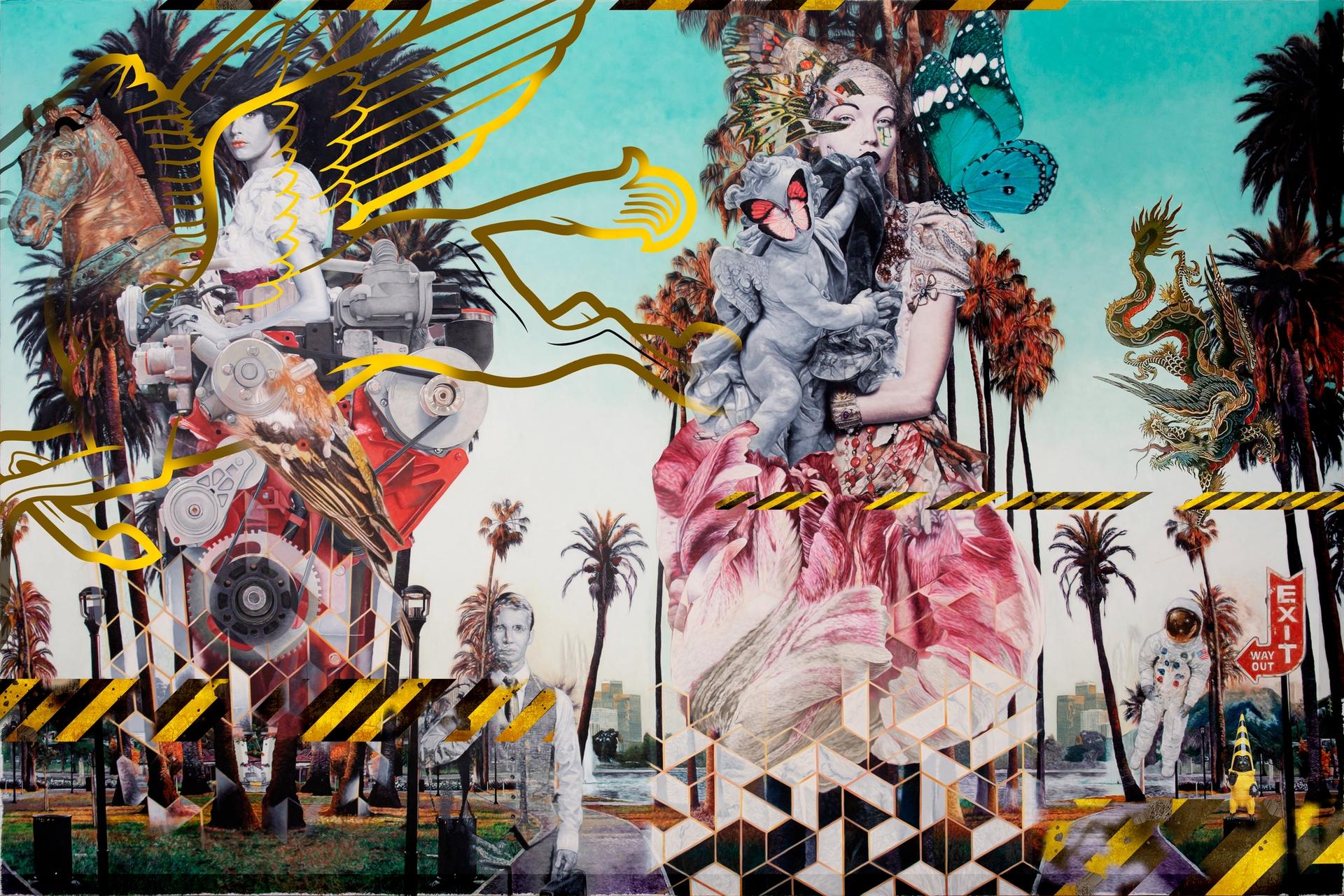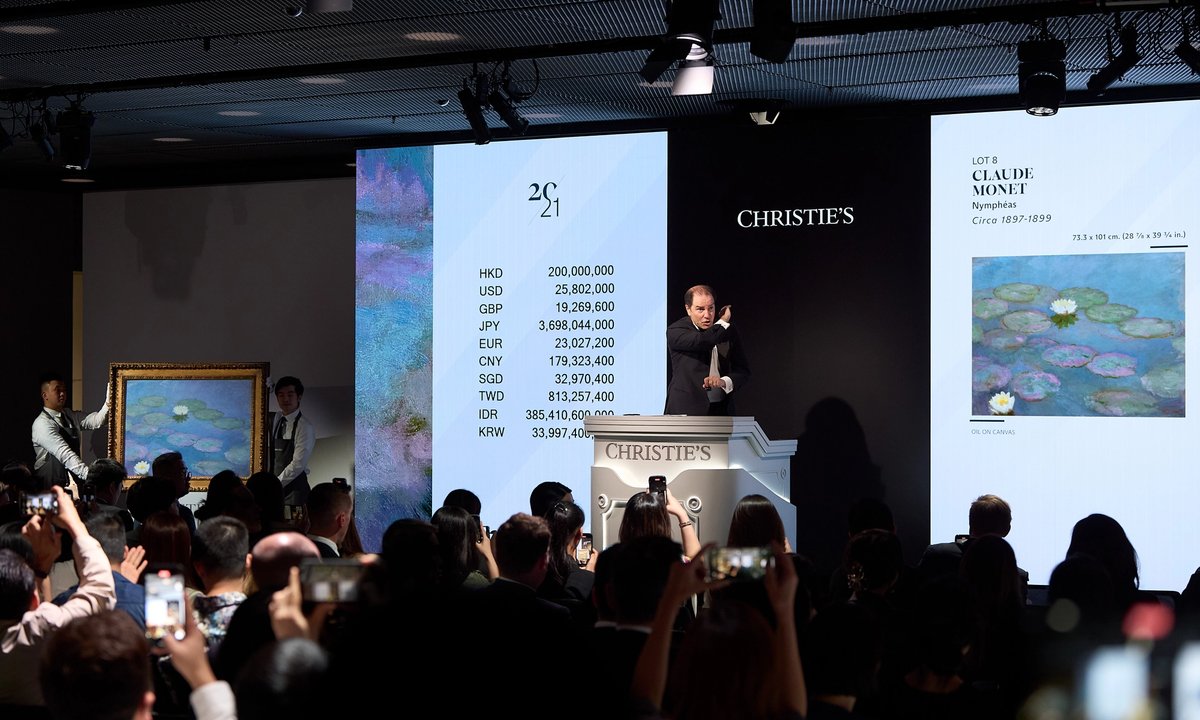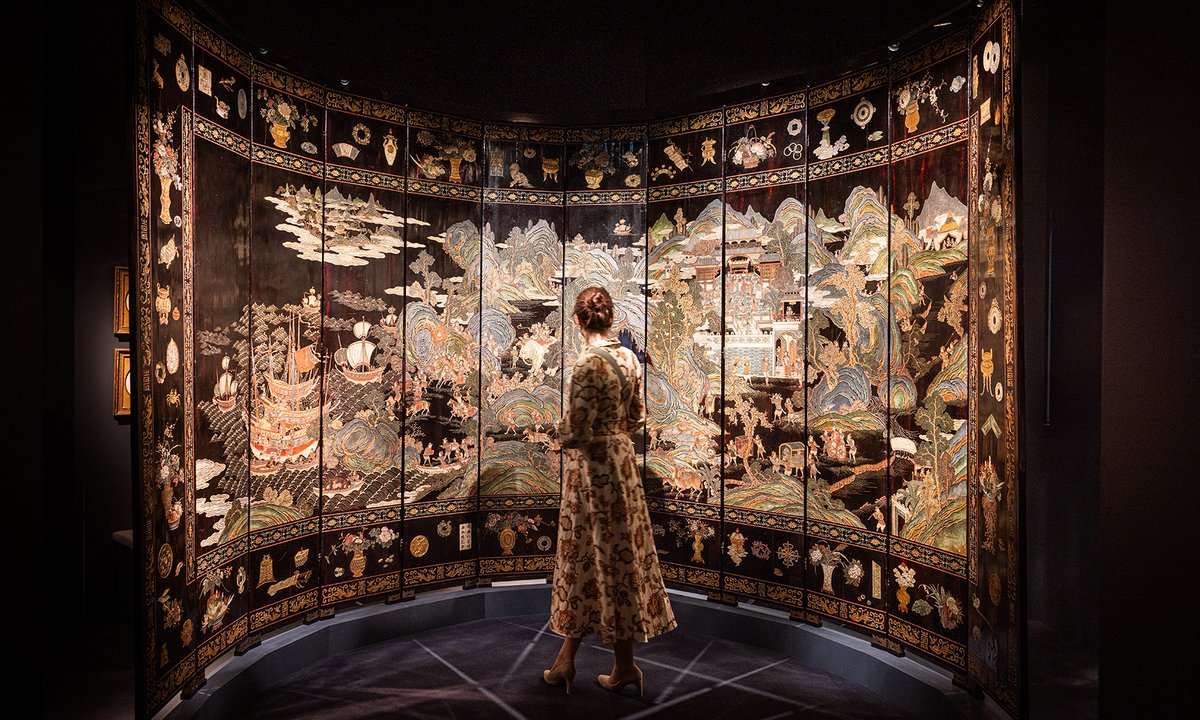“We didn’t want to take any risks—everything of high value is third-party guaranteed. I wanted something safe, fresh and uplifting—it’s been a difficult, strange year for all of us.”
So said Cristian Albu, Christie’s deputy chairman, head of 20th and 21st Century Art, Asia Pacific, before the first evening sale of 20th and 21st century art at the auction house’s grand new Hong Kong headquarters, which took place Thursday evening (26 September).
Now is not an easy time to sell art, anywhere, but the slowdown of buying from mainland Chinese collectors has been much publicised and particularly impacts these Hong Kong auctions. As Yuki Terase, a founding partner of the advisory firm Art Intelligence Global, told The Art Newspaper before the sale: “I talk with Amy [Cappellazzo, her co-founder in New York] every day and we exchange how the market is. I feel the sentiment is not that different globally, so it’s not Asia specific in terms of people being cautious.”
But, she adds, activity from Mainland Chinese collectors has slowed considerably since Covid: “That’s due to geopolitical factors but also because people got really excited and bought a lot very fast at the beginning and then slowed down. It’s inevitable for a new market to slow down—no market continues to grow at a double-digit percentage every year and China has hit that point. But does that mean there are no collectors buying in China? I don’t think so. They’re just more selective, more cautious.”
Terase observed of tonight’s Christie’s sale: “They’ve played it safe but in a good way—they’ve picked more classic blue-chip names, far fewer emerging artists’ works which you used to see a lot in Hong Kong sales. I think that’s right for the current environment—people are wanting blue-chip works as they see it as a safe place to put their money.”
Christie’s tactic paid off, with the auction achieving HK$1bn ($134m) with fees. The hammer total came to HK$883.1m ($113.4m), just shy of the low end of the pre-sale estimate of HK$884.4m to HK$1.3bn ($113.6m to $167m), calculated without fees. Of the 46 lots offered, 93% sold and 11 were already effectively pre-sold through third-party guarantees, and one—unusually in the current market—carried a house guarantee.
Consigning the sale was tough, Albu says: “It hasn’t been easy—we all cancelled our summer, it’s been two or three months of hard work. Every single painting was like getting blood out of a stone!” The allure of the new Henderson building space helped persuade a number of vendors, but the safety net of a third-party guarantee was crucial: “From the very beginning, discussions with the Van Gogh, Monet and Kim Whan-Ki [vendors] were based on the agreement we would have a third-party guarantee in place.”

Vincent van Gogh, Les canots amarrés, 1887 Courtesy of Christie’s
It was a good thing they were, as much of the bidding felt sticky. The sale centred figuratively and financially around a few commercially reliable 19th- and 20th-century names. Nodding to the 150th anniversary of Impressionism this year, one high-value highlight of the sale was a Caude Monet waterlilies painting, one of eight from his first Nymphéas series (around 1897-99), which had been owned by Michel Monet and had never appeared at auction before. After long, plodding bidding—slowed further by one client’s request to bid in US dollars—Nymphéas eventually sold to Albu’s phone bidder, presumably the guarantor, for HK$180m (HK$233.3m/$29.9m with fees), below the HK$200m to HK$280m estimate but still an auction record for the artist in Asia.
Similarly, Vincent van Gogh’s Les canots amarrés, one of a series of paintings of the Seine made in the summer of 1887 in the Parisian suburb of Asnières-sur-Seine, was estimated to sell for between HK$230m and HK$380m ($30m-$50m), but went for HK$215m (HK$250.6m/$32.2m with fees), the top price of the sale.
That is a record for Van Gogh in Asia and it sold to a bidder, seemingly from the US, on the phone with Max Carter, the vice chairman for 20th and 21st century art at Christie’s Americas. Earlier this month, The Art Newspaper’s Van Gogh expert Martin Bailey described Les canots amarrés as “one of the most important works of Western art to go under the hammer in Asia”. Bailey also reported that, although the official line is that Les canots amarrés was being sold by “a family trust represented by the royal family of Bourbon-Two Sicilies and Mr Patrick L. Abraham”, the seller is effectively Princess Camilla, of the Bourbon-Two Sicilies family.

Zao Wou-Ki, 05.06.80 – Triptyque, 1980 Courtesy of Christie’s
Described by Albu as a “bridge” between the European and Asian works of art in the sale, Zao Wou-Ki’s 05.06.80 – Triptyque (1980) was one of two triptychs made by the Chinese émigré for his exhibition at the Grand Palais in Paris in 1981. Presented without a guarantee, the painting sold to a buyer on the phone with Eric Chang, chairman for Asian 20th century and contemporary art at Christie’s Hong Kong, for HK$80m (HK$95.3m/$12.2m with fees), against an estimate of HK$78m to HK$128m.
Speaking before the sale, Albu alluded to the “massive” South Korean market and why a painting by Korean master Kim Whan-Ki was “a pillar” of the sale. A huge blue dot painting, made in 1971 and measuring two and a half metres across, 9-XII-71 #216 (1971) sold to Christie’s Seoul general manager Hak Jun Lee’s phone bidder for HK$46m (HK$56m/$7.2m with fees).
This year, Christie’s quietly decided to discontinue its Post-Millenium auctions of 21st century art, which were launched in 2022. “We walked away from the ultra-contemporary market, everything painted a year or two ago—I don’t want us to be part of the speculation,” Albu told The Art Newspaper before tonight’s Hong Kong sale. “Bringing pieces to auction and achieving crazy high prices, which later implode, is not a good thing. It’s not up to us to decide—it’s better to let curators and museums and institutions decide what is great, rather than us playing gods.”

Ronald Ventura, State of Bloom, 2021 Courtesy of Christie’s
However, the pockets of energy in tonight’s sale were, ironically, for contemporary works. For instance, the third lot, an abstract painting titled 18:50 from 2021 by the in-demand Los Angeles-based artist Lucy Bull sold for a world record HK$15m (HK$18.5m/$2.3m with fees), tripling its HK$5m to HK$8m estimate. That trounces the previous auction record for Bull, set at Sotheby’s in New York in May, when 16:10 (2020) sold for $1.45m ($1.8m with fees). Amanda Schmitt, a New York-based art adviser, told The Art Newspaper in May that “a high percentage of collectors who are buying her work” are “selling it right away”. With numerous phone bidders competing for the work this evening at Christie’s, it went to a bidder on the phone with Ada Tsui, Christie’s Hong Kong-based vice president, head of 20th and 21st century evening sales.
Later in the sale, a painting by the popular Filipino artist Ronald Ventura drew perhaps the most energetic and competitive bidding of the whole sale. State of Bloom (2021), an oil on canvas pondering how wealth and technology impact society, was bought directly from the artist and pitched to sell for between HK$1.8m to HK$2.8m. But with bids ping-ponging between Christie’s Singapore-based team on the phones, it sold for a record HK$30m (HK$36.6m/$4.7m with fees). That almost doubles Ventura’s previous record, also set at Christie’s Hong Kong, but three years ago in 2021, of HK$19.4m (US$2.5m) with fees.
New auction records were also set for Lalan, Rhee Seundja, Alix Aymé, Mehdi Ghadyanloo, Tang Chang and Damrong Wong-Uparaj.
Not all the contemporary works flew so easily however. Early in the sale, the Hernan Bas painting Mystery Bouf (or, the kingdom after the flood) from 2009, went unsold with a HK$4.8m to HK$8.8m estimate. Later on, a painting by Christina Quarles, We Woke in Mourning Jus Tha Same (2017)—the only work in the sale with a house guarantee—drew almost no interest and sold for HK$1m (HK$1.2m/US$154, 242 with fees), half the low estimate, and is now presumably heading into Christie’s inventory. That was a blow for the seller, who bought it at Sotheby’s in London in June 2022 for £529,200 with fees.







